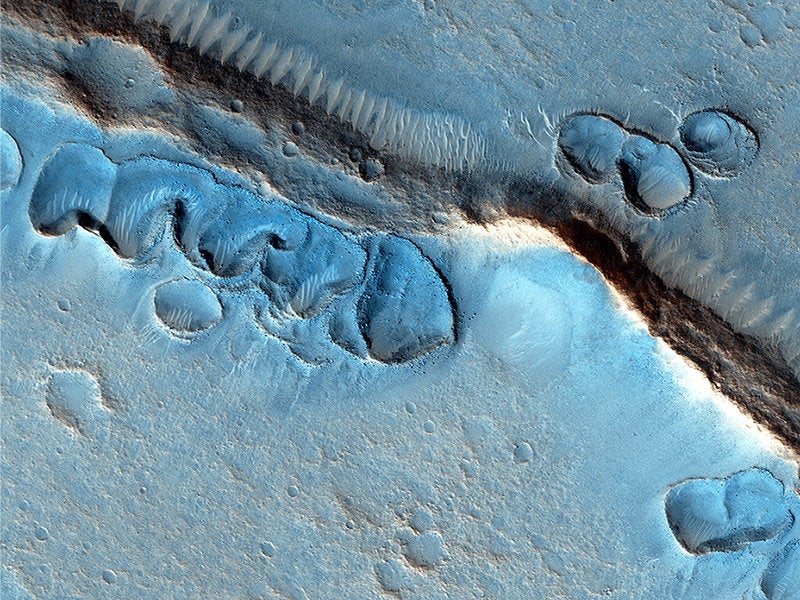Mysterious markings have been spotted on Martian sand dunes, but where did they come from? Planetary scientists now say that blocks of dry ice probably plowed the furrows while gliding around on the planet's surface -- check out the NASA YouTube video above.
"I have always dreamed of going to Mars," Dr. Serina Diniega, lead author of a new study on the phenomenon and a planetary scientist at NASA's Jet Propulsion Laboratory, said in a written statement. "Now I dream of snowboarding down a Martian sand dune on a block of dry ice."
Talk about taking extreme sports to an out-of-this-world level.
How did the researchers connect the dune markings to dry ice? First they looked closely at Mars Reconnaissance Orbiter images of the markings, which are technically called linear gullies.
The images showed that dunes with gullies are covered by carbon dioxide frost (also known as dry ice) during the winter, and the gullies tend to have a consistent width, often ending with a pit at the bottom of the dune. Such gullies on Earth that are caused by water would have debris at the bottom, because water may carry sediment downhill.
Next, the researchers tested the idea by pushing a sheet of dry ice down sand dunes in Utah and California.
"We didn't expect it to just move and move and move and move and keep moving all the way to the bottom," Diniega says in the YouTube video. "Dry ice, as it heats up, turns into gas that pushes against the sand as it comes out. After a few hours it's scooped out a nice little area and so you have a feature that looks like what we see on Mars."
And even though Earth's atmosphere differs from Mars, calculations indicate the dry ice would act similarly in early spring on the Red Planet.
So, mystery solved? Not so fast.
"There are a variety of different types of features on Mars that sometimes get lumped together as 'gullies,' but they are formed by different processes," Dr. Candice Hansen, study co-author and senior scientist at the Planetary Science Institute in Arizona, said in a written statement. "Just because this dry-ice hypothesis looks like a good explanation for one type doesn't mean it applies to others."
The study was published in the July 2013 issue of the journal Icarus.

